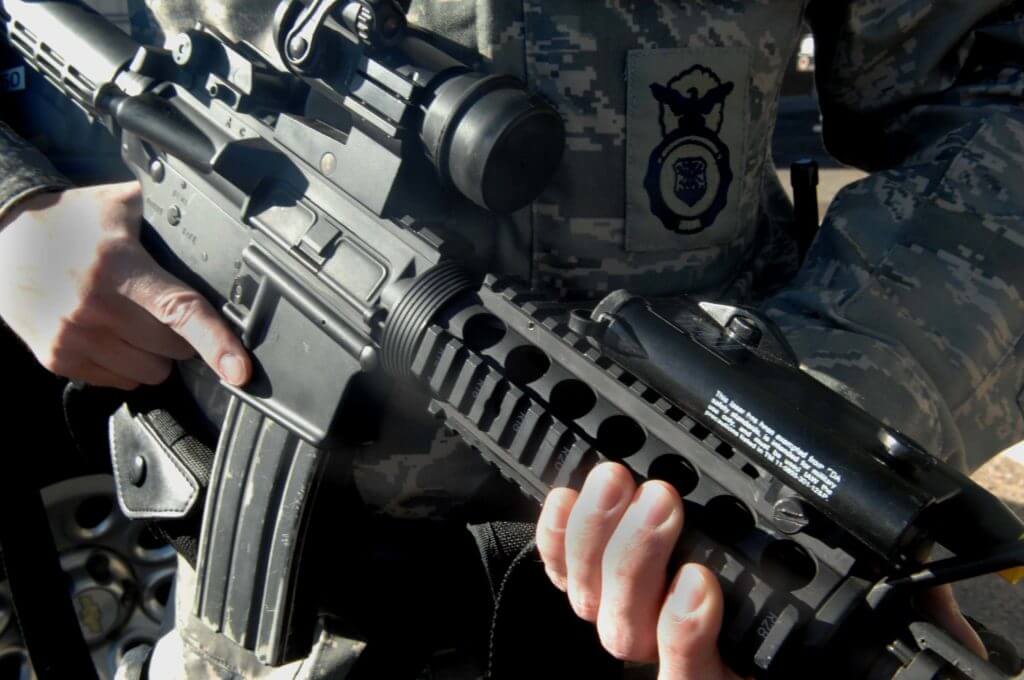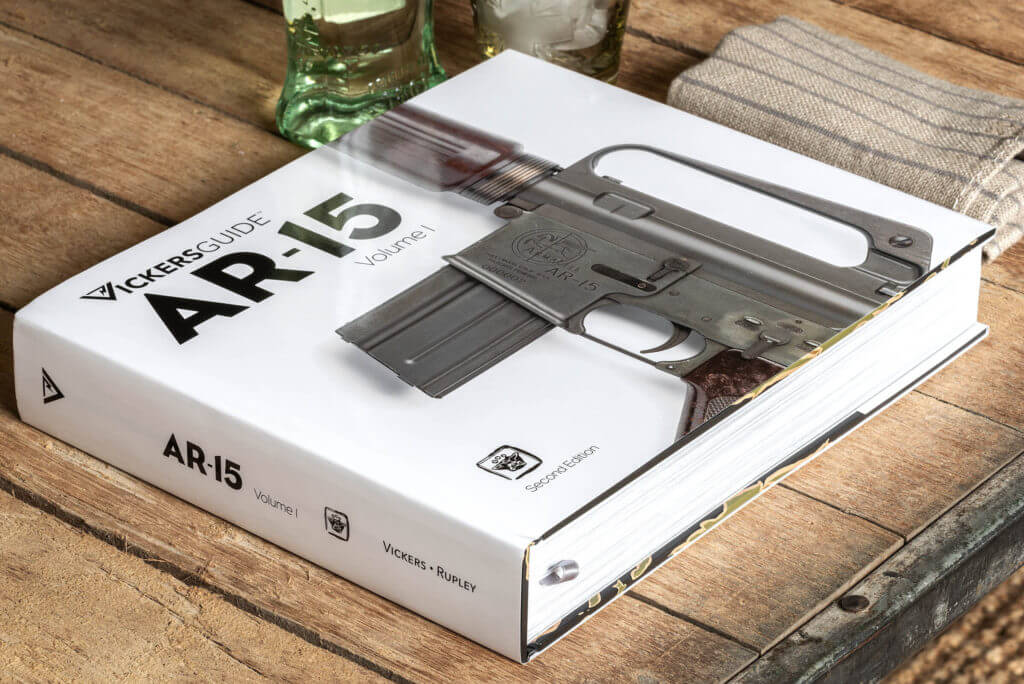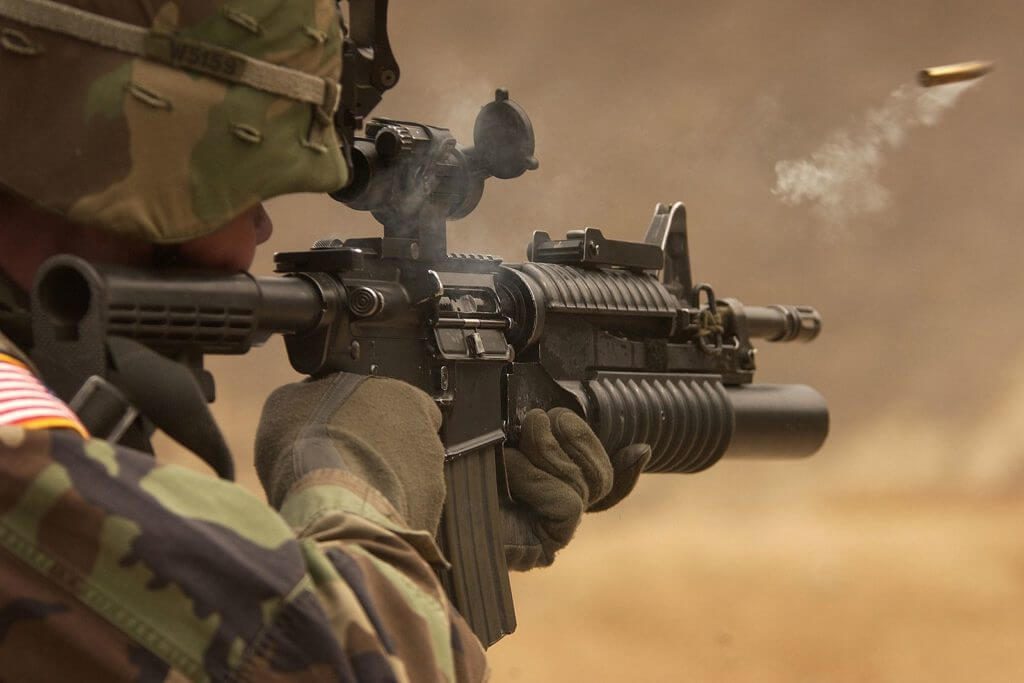Estimated reading time: 5 minutes
Let’s delve into the AR-15, a name that often resonates within firearm circles and news headlines, and its counterpart, the M4. Curious about how these two guns differ? Keep reading to discover the fascinating histories and subtle distinctions that set these two exceptional rifles apart.

Table of contents
Understanding the AR-15
At first glance, the M4 and AR-15 might appear identical. However, upon closer inspection, you’ll realize that while they share similarities, there are crucial distinctions between them.
The most straightforward way to differentiate them is to note that the M4 can operate in either a full-auto or burst fire mode, a feature the AR-15 lacks.
Minor differences in the AR-15 and M4, such as barrel length and attachments, exist but do not change much about the rifle’s performance or functionality.
Available on GunsAmerica Now
The Birth of The Rifles
To fully appreciate these rifles, it’s essential to understand their histories, which provide insight into their design and functionality.
Tracing the AR-15’s Footprints Armalite first conceived the AR-15 in 1956 as a smaller variant of the AR-10. Contrary to popular belief, the “AR” in AR-15 stands for Armalite Rifle, not “assault rifle,” with “15” representing the model number.
The AR-15’s design was a response to the U.S. Army Command’s request for a compact .223 rifle to potentially replace a collection of existing weapons. Despite superior testing performance, the AR-15 lost out to the M14. Financial constraints led Armalite to sell the AR-15 design to Colt in 1959. Colt made several design improvements before initiating mass production and offering the gun to military organizations.
The Colt AR-15 found success in niche markets, with notable early adoption by the U.S. Air Force. By 1963, U.S. Secretary of Defense Robert McNamara approved the AR-15, which was subsequently renamed the M16, for military use. Colt introduced a semi-automatic AR-15 variant for civilian and police use in 1964, and after Colt’s patent expired in 1977, other manufacturers began to produce their own AR-15 versions.
Fast forward to the present, virtually every firearms manufacturer offers their version of the AR-15 style rifle, with a vast market for AR-15 parts and accessories thanks to its modular design.

Purchase the Vickers Guide: AR-15 Here
Tracing the M4’s History
The M4’s history builds upon the AR-15 and M16. After the M16’s adoption, the military requested a compact version suitable for close-quarters combat, resulting in Colt producing the Colt Commando XM177 in 1966.
However, the Commando had issues with range and accuracy due to its shortened barrel, prompting Colt to develop the XM4 in 1984. After ten years of testing and modifications, the XM4, renamed the M4, was adopted by the U.S. military in 1994.
AR-15 VS. M4: Spotting the Differences
As both the AR-15 and M4 belong to the same family, it’s unsurprising that their differences are subtle.
The M4, being a carbine-length rifle, has a shorter 14.5-inch barrel compared to the standard AR-15’s 16-inch barrel. The M4’s shorter barrel allows for the attachment of a grenade launcher, a feature unique to military weapons.
Available on GunsAmerica Now
To match the reduced barrel size, the M4 has a shorter gas tube and modified feed ramps. It also features a collapsible stock compared to the standard AR-15’s fixed stock, although collapsible stock configurations for the AR-15 are easily accessible.
SEE ALSO: Ruger’s New SFAR: A Big Surprise In A Small Package
The most significant distinction between the AR-15 and M4 is the selective fire capabilities – the M4 can operate in 3-round burst or fully automatic mode, while the AR-15 operates in semi-automatic mode.

AR-15 & M4: The Commonalities
The majority of the AR-15 and M4’s components are the same, including the bolt carrier group, charging handle, and trigger assembly. Even the handguards and rail systems can be identical, depending on the AR-15’s configuration.
The M4 VS. the AR-15: Which takes the trophy?
Unless you’re in the military, your best bet is the AR-15 as the M4 is primarily reserved for military use. The AR-15 offers similar capabilities, minus the full-auto function.
It’s easy to make your AR-15 more similar to an M4. You can purchase a mil-spec lower and M4 handguards, or even a short-barreled AR-15, given you follow the necessary legal steps. Full-auto AR-15s are available, but acquiring them is considerably more challenging and costly.
Available on GunsAmerica Now
Concluding the AR-15 & M4 Discussion
In summary, the AR-15 is effectively a semi-auto, civilian version of the M4. Although the M4 boasts full-auto capabilities, AR-15s are readily available, highly customizable, and just as effective.
SEE ALSO: Testing Springfield’s New 9mm SAINT Victor
We’d love to hear your thoughts on the M4. If you’re looking for ways to enhance your AR-15 experience, check out our guide to AR-15 upgrades and accessories.
*** Buy and Sell on GunsAmerica! All Local Sales are FREE! ***

